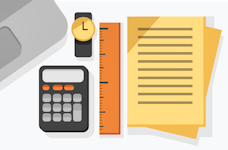Data Entry Tests in 2025
All products and services featured are independently selected by WikiJob. When you register or purchase through links on this page, we may earn a commission.
- What Is a Data Entry Test?
- Different Data Entry Work
empty
empty
empty
empty
empty
- What Do Data Entry Tests Cover?
- Commonly Used Data Entry Assessments in January 2025
empty
empty
- What Skills Are Needed for a Data Entry Test?
- What to Expect in a Data Entry Test (2025)
- What Is a Good Score on a Data Entry Test?
- How to Prepare for Your Data Entry Test in January 2025
- Final Thoughts
What Is a Data Entry Test?
A data entry test or alphanumeric data entry testing is used by many employers to assess a potential employee’s skills on a computer, including retrieving and inputting data, maintaining and storing it safely.
These skills are assessed through one or more tests at the application or interview stage of a prospective job.
The alphanumeric data entry tests will focus on typing, computer proficiency, and numerical and literacy skills.
With almost 80% of businesses requiring computer skills on some level, it is becoming increasingly common for candidates to do a data entry test.
This article will focus on passing your data entry test in 2025 and what is involved.
Receptionists, administration staff, healthcare workers, legal professionals, banking and financial staff, and teachers are some of the many job roles that will use data entry in their career.
Most of these roles will require a data entry test when applying for the job.
Different Data Entry Work
Although the process is similar in all data entry, there are different types of data entry jobs depending on the role information involved.
Online Data Entry Work
This requires the worker to retrieve information from the internet and interpret and input the data into a web form or online database.
The data will then be shared automatically online to whoever needs to see it. It saves having to upload the information separately in an email.
It needs the individual to be competent online and be able to find and transcribe the required data efficiently.
Offline Data Entry Work
This is where information and data may be retrieved and input without needing to be online and using the internet.
This is generally used for vast volumes of data and invoices.
The information is transcribed and structured and then may be emailed over to the relevant people.
Specialized Data Entry
This work is most common in industries such as healthcare and real estate, where information and data is needed to be reproduced so it can be saved and stored safely and privately.
It requires extra attention to detail so no mistakes are made, and the information will all be confidential.
Transcription
Work of this kind requires the worker to transcribe videos and audios (for example, podcasts) into text scripts.
This means ensuring all technical abbreviations are transcribed correctly.
The script may be on a subject that the worker has no knowledge on, so it requires skills to be able to interpret and input.
This kind of data entry is commonly used in healthcare, research and education.
Practice Data Entry Test with JobTestPrep
Translation
This is a highly-skilled area and requires the worker to translate books, articles, web content and more into another language.
Online tools do not always translate localized slang and terms so it requires a more manual translation.
What Do Data Entry Tests Cover?
Data entry tests literally measure speed and accuracy in entering data, and there are different aspects that can be covered.
These include:
-
Alpha numerical test – Typing in a variety of words, letters and numbers to see how fast and accurate the individual is. An alpha numerical will cover data such as names, addresses and ages all in one document
-
10-key – Many assessments cover 10-key drills, which will see the candidate required to type with all ten fingers. This will be measured by having to type in multiple figures, such as social security numbers, number plates and financial figures that will also include symbols. The assessment marks how many mistakes and types are made.
-
Numerical – This will measure the ability to accurately and speedily input numerical data such as phone numbers, credit card numbers and more.
-
Alpha – This focuses on words and letters only; for example, addresses, company names and passwords.
-
Touch-typing – For roles that require top typing skills, the data entry typing speed looks at speed and accuracy when typing letters, emails and minutes from meetings.
Practice Data Entry test with JobTestPrep
Commonly Used Data Entry Assessments in January 2025
There are some commonly used assessment providers that employers use at the recruitment stage to measure any potential candidates.
eSkill
The first is eSkill, which is used by companies such as Coca-cola, Stanford University, FedEx, LG and randstad.
The eSkill assessments provide tests in computer proficiency, typing skills and alphanumeric data entry tests.
The employer can use the standard-job tests where certain jobs such as purchasing clerk, receptionist, healthcare transcriber are assessed.
Subject-based tests measure knowledge and skills in typing, 10-key drills and use programs such as Excel, Word and Powerpoint.
The employer can also use the tools to create a company or job specific test.
Kenexa Prove-It Tests
The Kenexa Prove-it tests are used by industries such as healthcare, financial services, education and more.
The data entry tests by Kenexa focus on the 10-key assessment and alphanumeric skills.
An interactive database or spreadsheet is sent to the candidate to interpret and input. The candidate may need to create tables or registers from the information given.
If you need to prepare for a number of different employment tests and want to outsmart the competition, choose a Premium Membership from JobTestPrep.
You will get access to three PrepPacks of your choice, from a database that covers all the major test providers and employers and tailored profession packs.

What Skills Are Needed for a Data Entry Test?
There are some typical skills that will be required for a successful data entry result – and these skills are highlighted in the tests.
-
Communication skills – The candidate needs to read and understand the information and instructions given in the data entry tests. They also need to be able to interpret and relay the data correctly and clearly to the relevant people. Good communication skills are needed for this
-
Speed and efficiency – The successful candidate will be able to quickly and accurately digest and relay information in whichever form is needed. They need to be quick thinking as well as be able to stay calm under pressure.
-
Accuracy – Attention to detail and being able to process information correctly is vital to the role of data entry, as the test is marked not only on speed but accuracy too.
-
Problem solving – In data entry, there may be information that is not structured correctly or clearly, or there may be mathematical errors and problems that need resolving. This is why it’s crucial to test problem solving skills in data entry tests.
What to Expect in a Data Entry Test (2025)
Commonly, the alphanumeric data entry tests are self-administered and either sent by email to the candidate or set up on the employer’s system for the individual to do when they go for the interview.
Typically, each test is between three and five minutes per section, depending on the type of test and what is being assessed.
For example, if the alpha numerical test is five minutes long, it will give a more accurate measure of typing skills, so a touch-typing test is likely to be the longer of the tests. However, if speed is the main factor being measured, the test would most likely be shorter.
What Is a Good Score on a Data Entry Test?
Alphanumeric data entry tests are scored either by words per minute or keystrokes per hour (KPH).
Typing and alphanumeric data entry tests are typically measured through the words per minute, and a good score is normally between 60 and 80 words per minute.
As with all aptitude tests, the higher the score in the data entry, the more chance the individual has of achieving the role. A higher score can be reached through practice and knowledge of what is involved in the tests.
Numerical data entry tests are commonly assessed through keystroke per hour. A pass rate is generally considered to be a minimum of 9,000 keystrokes per hour. Although, again, the higher the results, the more chance of becoming the top scorer and achieving the role.
With practice, a score of 12,000 KPH combined with a 98% accuracy rate is possible.
The assessors are not trying to catch anyone out, so just try and keep calm and remember that these are very common tests to measure computer proficiency and basic numeric and alpha skills.
Equally, it is advised to be honest in the initial application stage and add in your average words per minute or KPH score, if known.
It will become apparent in the data entry test of your skills, so it is best to be honest from the start.
How to Prepare for Your Data Entry Test in January 2025
Most job roles will specify if a data entry test is required to be successful in application, which means you as the candidate will know what preparation is needed to pass the test.
There are some key tips for preparing for alphanumeric data entry testing:
Step 1. Complete Lots of Practice Tests Online
Once you know which type of data entry test you will be taking, you can search online for some practice tests.
Companies such as JobTestPrep offer generic data entry tests, as well as the specific companies’ tests too.
eSkills and Kenexa both have example interview questions for data entry jobs and demos for you to take. These give an indication of what is to be expected in the tests, as well as allowing you to test under the timescale given.
Step 2. Practice, Practice, Practice
To get your speed and accuracy levels as high as possible, the key is to practice as much as possible.
Do the tests, as well as practice typing skills whenever you can until you are satisfied with your results.
Step 3. Have Good Posture
When taking the tests, it is advised to ensure you have good posture. This means straight back and shoulders, which will help you feel comfortable and be able to type better.
Step 4. Practice Touch Typing With All Ten Fingers
The 10-key assessment requires you to do this, and it will help in all tests with speed as you can increase keystroke by using multiple fingers.
Step 5. Have the Right Keyboard
Ensure you have the right keyboard where the numbers are to the right. This will help with faster typing.
Practice Data Entry test with JobTestPrep
Final Thoughts
A data entry test is a very popular assessment used by employers to measure a potential employee’s typing speed, accuracy, computer efficiency and understanding.
It is predicted that almost 80% of jobs now need basic typing and computer skills, so it is vital that you are well prepared for the tests when applying for a role.
You don’t need to feel overwhelmed, and, with the right practice and knowledge, you can achieve a satisfactory and high score.






